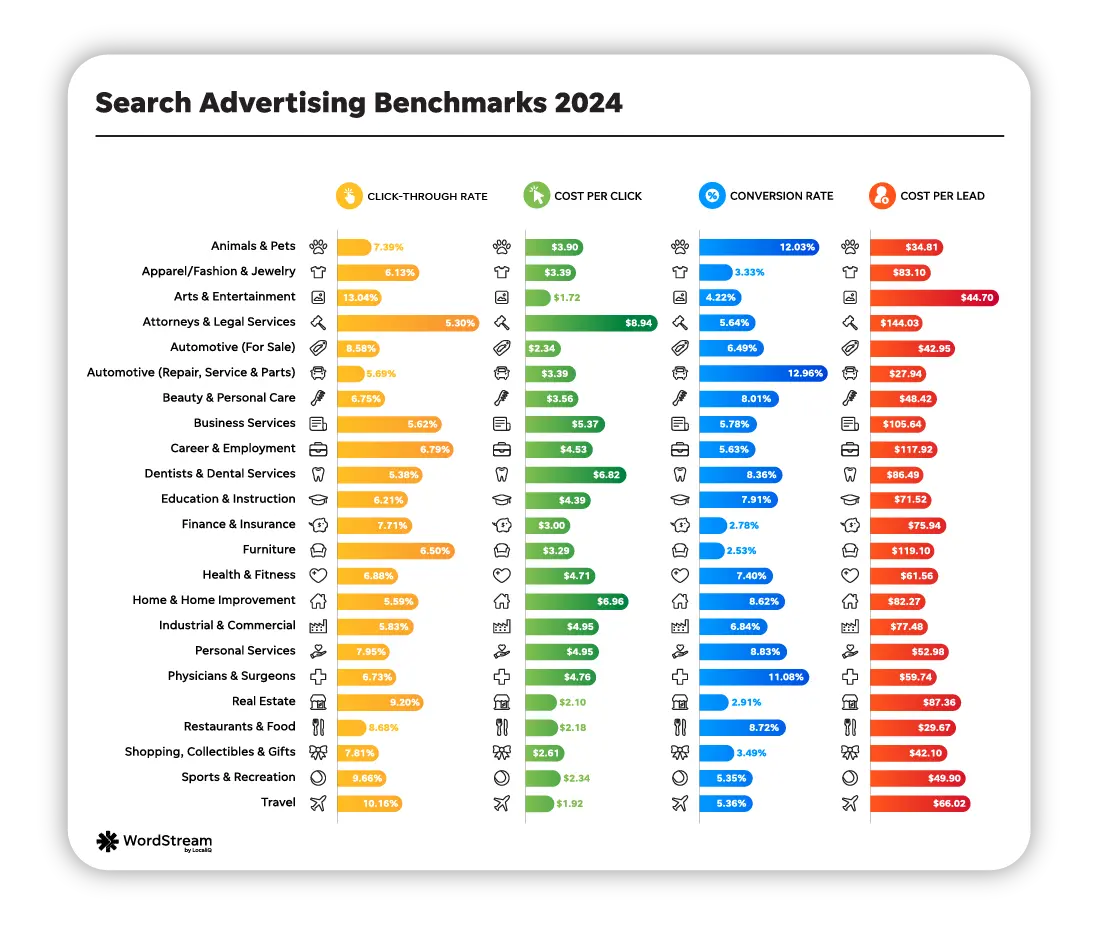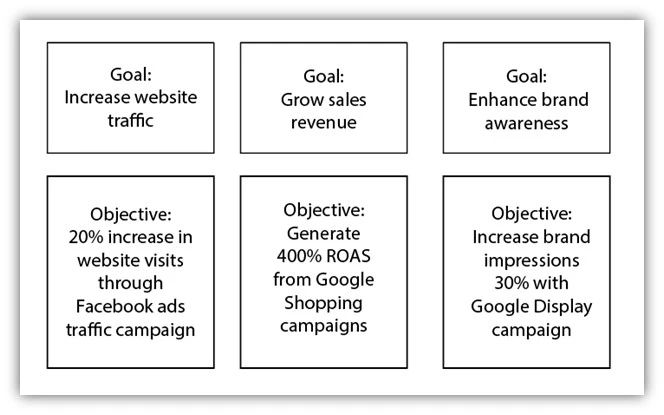Being a good PPC agency isn’t just about creating campaigns that perform well. It’s also about effectively communicating that performance to your clients in a way that educates them and relates to their business goals.
This is what quarterly business reviews (QBRs) are for. And when conducted properly, they serve to reassure your clients, convey your value, and strengthen the overall relationship.
Read on to learn how to conduct a QBR that not only impresses your clients but also keeps them satisfied, engaged, and eager to continue working with you. Plus, we’ve got a quarterly business review PowerPoint template and copy-and-paste outline coming your way!
Contents
What is a quarterly business review?
A quarterly business review (QBR) is a comprehensive assessment that agencies conduct every three months for their clients, to evaluate performance, address concerns, and set goals. It can be done in person or over a conference call, and it’s accompanied by a visual presentation, usually a slide deck.
Why QBRs matter
Quarterly business reviews are paramount for ensuring mutual success for both your agency and clients. Here are a few reasons QBRs matter:
- Strategize. While weekly and monthly PPC reporting informs tactical decisions and catches issues or anomalies early, quarterly check-ins use broader data sets to inform the bigger strategy.
- Showcase.QBRs are also an opportunity to demonstrate the value you bring to your clients’ business, not just in terms of KPIs and revenue but also in the education you provide and how you compare to competitors.
- Strengthen. Quarterly check-ins are the best way to demonstrate transparency and make sure you’re aligned with their goals and expectations—which is how you build lasting client relationships.
What to review in a QBR
A quarterly business review is more than just a run-down of the numbers. As I said above, it’s a comprehensive assessment of all of the aspects of your work with your client. Here are the key things to review in a thorough QBR:
Performance metrics
First and foremost, you’ll want to do an overview of your PPC metrics, including click-through rates (CTR), conversion rates, cost per click (CPC), cost per acquisition (CPA), return on ad spend (ROAS), and overall campaign performance.
Because you’re looking at a broader data set, you can identify patterns, surface any external factors or industry trends, and identify both areas of success and opportunities for improvement.
It’s also a good idea to compare your performance to industry benchmarks.


? What results can your clients expect from Google Ads? Download our latest Google Ads Benchmarks to find out!
Goals
You’ll also want to revisit the goals you established at the beginning of the quarter. Did you achieve them? Why or why not? Of course, ideally, you’ll want to have achieved them but it’s also okay if a few areas fell short. When running PPC campaigns there will always be factors outside of your control, and not every campaign is going to run perfectly. What matters is that you’re transparent and that you have clear explanations.
You can then use this information to make adjustments to these goals or to the objectives that tie into them.


Campaigns
Once you’ve gone over the overall metrics and goals, it’s time to dive into the individual campaigns. In addition to reviewing the breakout metrics for these campaigns, you’ll also review individual ads, keywords, targeting settings, ad extensions, and more.
This is where you can get into more specifics about what worked and what didn’t, and propose optimizations based on the data and your expertise.
Optimizations can involve ad copy and creative, account structure, budget allocation, and more.


?? Is your (or your client’s) Google Ads account set up for success? Download now >> The Last Guide to Google Ads Account Structure You’ll Ever Need
Budget
Here is where you review how you spent your client’s budget, which may refer to how you allocated budget to different ad networks, to different campaigns within those networks, to different ads within those campaigns, or even keywords.
Most importantly, you’ll want to convey that you’re managing your client’s budget wisely, so be sure to illustrate the return on investment.
You can then discuss adjustments based on performance and shifts in the clients’ business priorities.
Competitive analysis
Don’t forget to assess what your client’s competitors are doing with their marketing and advertising strategies and share these findings. This may include their brand voice, the keywords they’re targeting, the products or services they’re advertising, and more.
You can then propose optimizations or changes in things like ad copy and targeting to help your client maintain unique and advantageous positioning in the market.
We have lots of competitive analysis templates you can use here as well as competitive advertising strategies you may want to try.


Get our competitor keyword analysis template here.
Strategy planning
Finally, propose a strategy for the next quarter, with clearly defined goals and measurable objectives, based on the data and insights you just shared. Gather feedback and input from your client and iterate on the strategy accordingly to make sure it’s aligned with their priorities and goals. This is also a good time to surface new trends, features, campaign types, and ideas that they may be interested in.
Feedback and Q&A
You should invite feedback and questions after every slide during the QBR. But you should also have one final slide at the end for overall feedback and questions. The goal here is to make sure the client is satisfied not just with the deliverables and performance but with the overall service and customer experience. This is also a time for questions about the contract and any expectation setting.
And once that is done, you will find yourself wrapping up a very productive, very rewarding quarterly business review with a very happy client! Nice work.
Final tips for conducting great QBRs
Before we get to the template, here are some final tips for running a QBR that keeps your clients coming back:
- Prepare: Preparation is key to conducting an effective QBR. Prior to the meeting, gather all relevant data including:
- Communicate clearly: Provide easy-to-understand data, clear explanations, and invite questions after every slide. Don’t be afraid to reveal mistakes and areas of improvement.
- Share the deck afterward: Don’t share the deck before the meeting. Use the meeting to walk them through it so they can get the information in the right context. Then, send it out after for their records and reference.
- Keep it connected: Consider each QBR to be a chapter in the overall story with your client. Each one should connect back to the previous quarter’s goals and look forward to the next quarter.
- Make it a narrative: As I just mentioned above, this is a story. Present it that way, with your client as the hero of their own narrative, and you’ll have an engaging QBR that leaves an impression.
QBR template
Find below a copy-and-paste template you can use for your QBR, or check out this PowerPoint template to customize!


- Executive summary:
- Overview of the current state of PPC campaigns
- Key highlights and achievements
- Challenges faced and solutions implemented
- Performance review:
- Campaign metrics: Click-through rates (CTR), conversion rates, cost per acquisition (CPA), return on ad spend (ROAS), etc.
- Comparison with KPIs and benchmarks
- Analysis of trends and insights
- Budget utilization:
- Breakdown of budget allocation across campaigns
- Assessment of budget effectiveness
- Recommendations for optimization
- Competitive analysis:
- Analysis of competitors’ strategies and performance
- Identification of opportunities and threats
- Recommendations to stay competitive
- Strategic recommendations:
- Proposed strategies for the upcoming quarter
- Measurable goals and objectives
- Clear deliverables, KPIs, and targets
- Ensure alignment with client priorities and market trends
- Client feedback and concerns:
- Open discussion on client satisfaction and concerns
- Addressing feedback and proposed solutions
- Commitment to continuous improvement
- Mutual understanding of expectations and outcomes
- Review of contract and terms
Start conducting stand-out QBRs now
Quarterly Business Reviews (QBRs) are prime opportunities for you to showcase your performance, demonstrate your value, and strategize for the upcoming quarter.
Using the tips and template above, you can ensure you are aligned with your clients’ goals and objectives, meeting their expectations, and providing an experience that keeps them coming back!